The observed incapacity for southern elephant seals (SES) to withstand late 20th and early 21st century extreme cold and expanding sea ice conditions suggest coastal Antarctica (Victoria Land Coast, VLC) climate is colder and icier today than any time since the last glacial. A new study even suggests the last glacial (CO2 ~190 ppm) may have been warmer with less ice than today in this region.
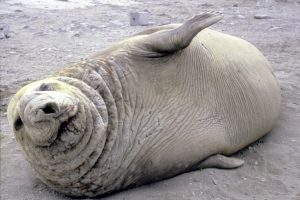 Image Source: Wikimedia Commons (public domain)
Image Source: Wikimedia Commons (public domain)
The Southern Ocean (the seawater south of 60°S) occupies approximately 14% of the Earth’s surface (Turney et al., 2017). Since 1982 there has been a “significant and robust cooling trend” throughout the Southern Ocean surrounding Antarctica (Xu et al., 2022).
Consequent to this robust cooling trend, the sea ice in the Southern Hemisphere has been expanding since the late 1970s (Comiso et al., 2017).
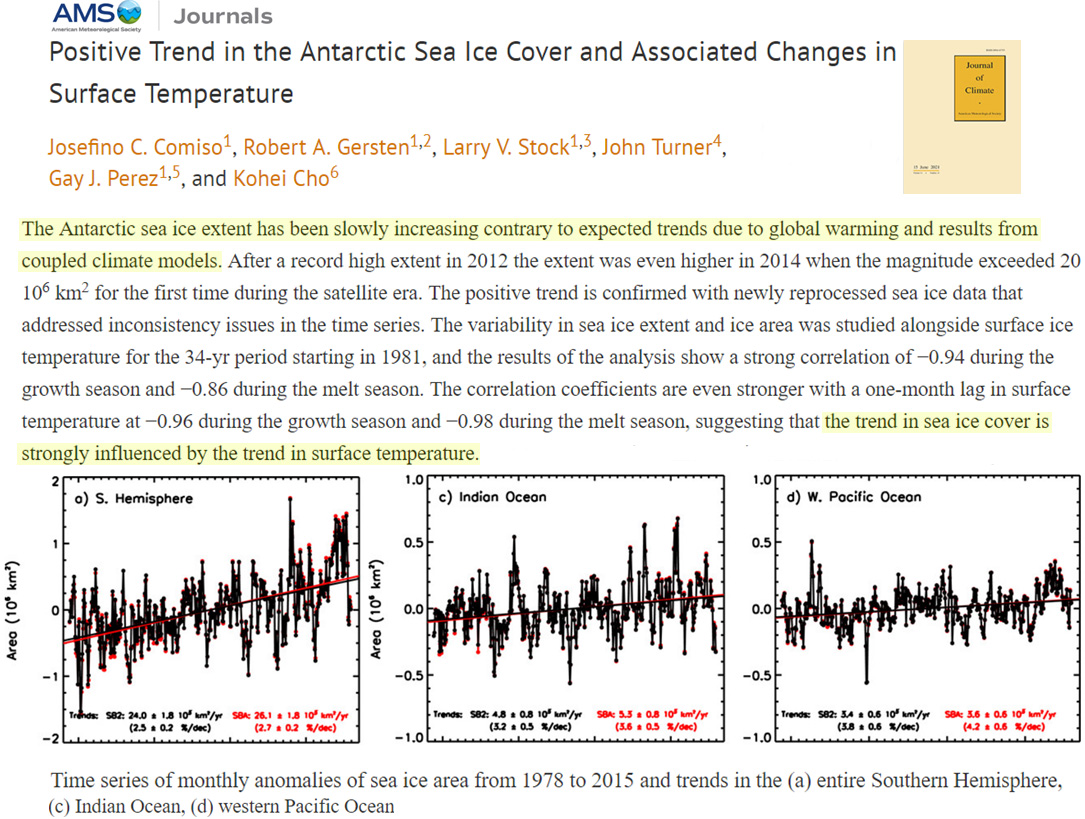
Image Source: Comiso et al., 2017
Southern elephant seals (SES) require extended sea ice-free sea waters to breed, forage, and provide nourishment for their pups.
Throughout the Holocene (Medieval Warm Period, Roman Warm Period, and earlier) and until a few hundred years ago (from ~7100 to 500 years before present), coastal Antarctica’s Victoria Land (VLC) was substantially warmer than today. The Ross Sea was also sufficiently ice-free to allow for elephant seal populations (as large as ~200,000 individuals) to thrive at 73-78°S.
Today, however, elephant seal populations can no longer subsist anywhere even remotely close to the coasts of the Antarctic continent. It is now too cold and the sea ice is too extensive.
The substantially reduced number of remaining SES today can only survive on subantarctic islands (South Georgia, Macquarie) at southern South American latitudes (~54.5°S) situated 2400 kilometers north of VLC (Koch et al., 2019).
The “genetically distinct” VLC elephant seal populations that endured throughout the Holocene and even through Medieval times have tragically died off in the last few centuries due to the modern-era cooling gradient and subsequent ice cover expansion (Hall et al., 2023).
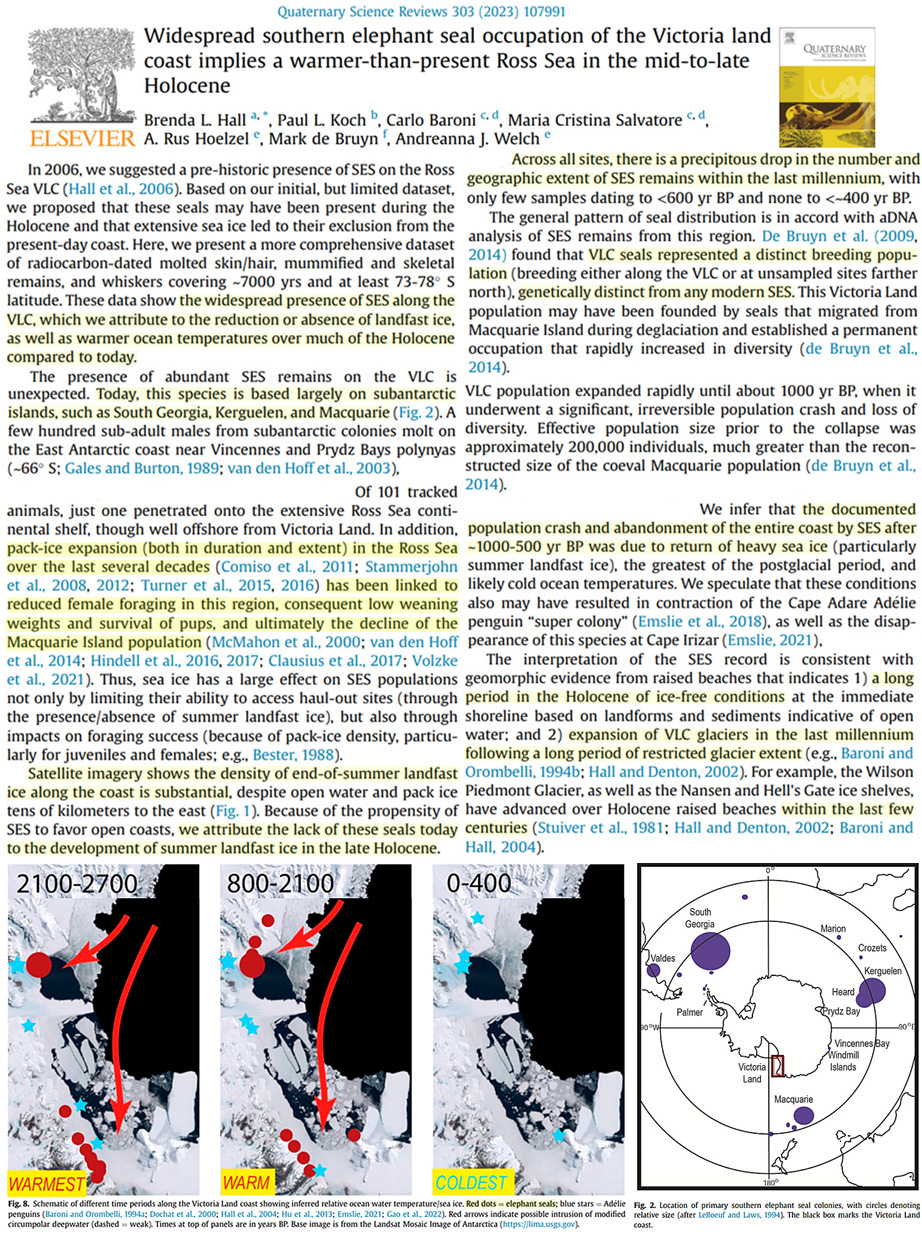
Image Source: Hall et al., 2023
And with the modern sea surface temperatures cooling and southern hemisphere sea ice expansion in recent decades, even the subantarctic islands in the South Pacific that SES are limited to occupying today may not be sufficiently warm and ice-free to accommodate remaining populations. Today’s southern elephant seals are thus threatened by modern cooling.
“[P]ack-ice expansion (both duration and extent) in the Ross Sea over the last several decades has been linked to reduced female foraging in this region, consequent low weaning weights and survival of pups, and ultimately the decline of the Macquarie Island population.” – Hall et al., 2023
Perhaps if these mammals were polar bears the existential threat of polar cooling might receive some media attention.
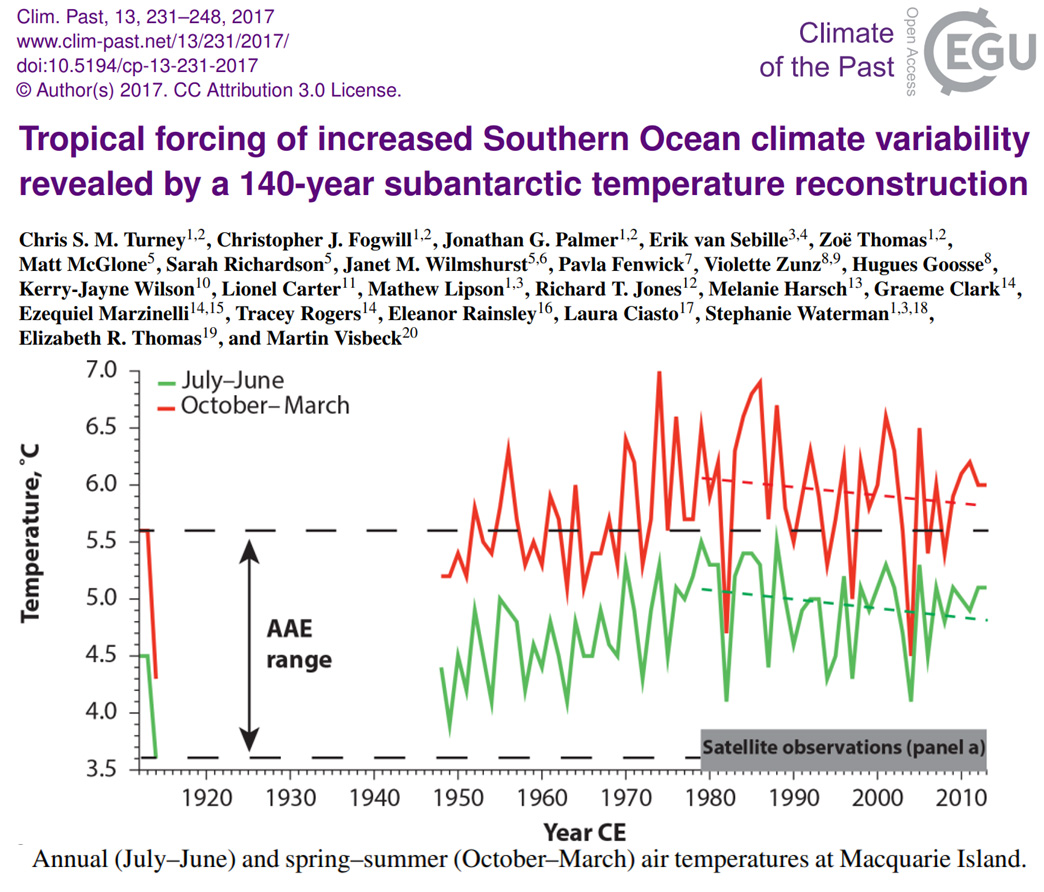
Image Source: Turney et al., 2017
Interestingly, Hall et al. also report that not only have the last few centuries (including the present) been “the coldest, iciest conditions in the post-glacial period” (see the blue sea ice and red temperature trend lines on the Holocene timeline), but even the last glacial period had periods (~50,000 to 25,000 years ago) with less sea ice than today, allowing SES to occupy the VLC coast.
The last glacial period had CO2 levels under 200 ppm.
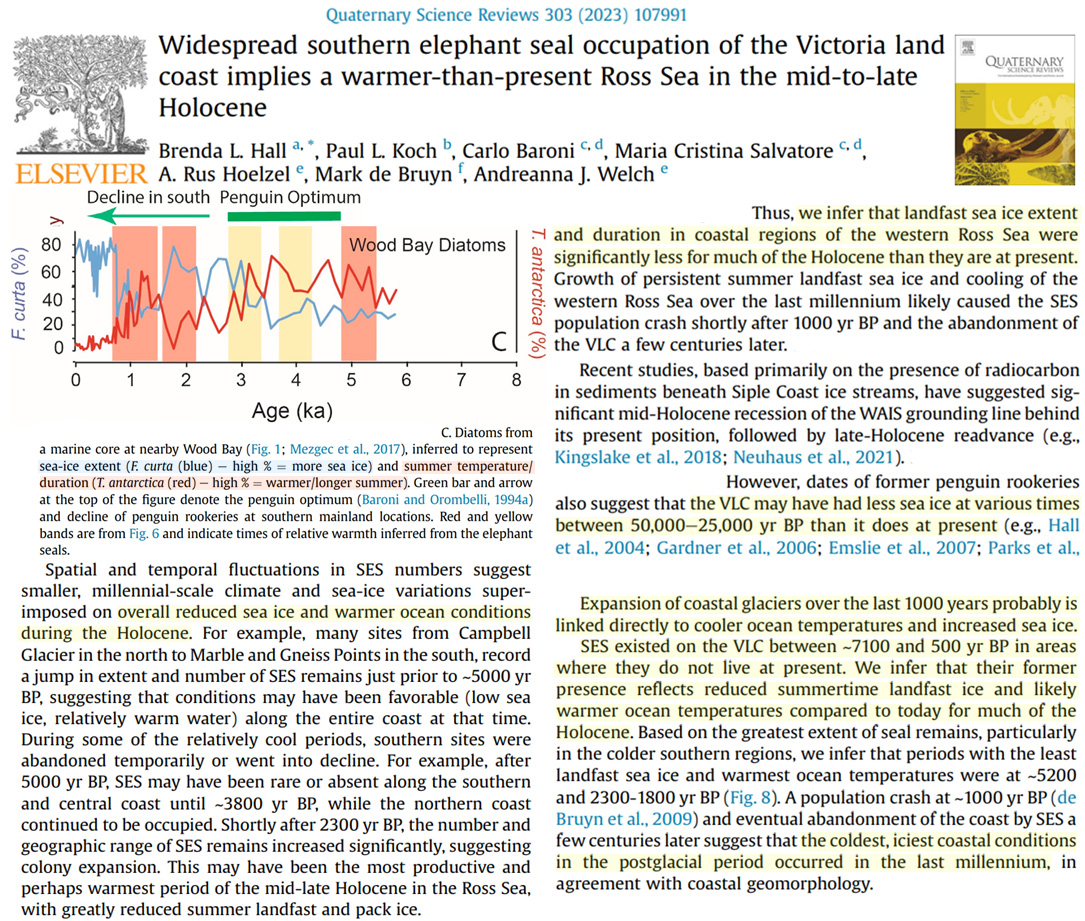





[…] Related: Recent Decades Of Cooling And Sea Ice Expansion Has Led To Declining Elephant Seal Populations […]
[…] From NoTricksZone […]
Excellent post